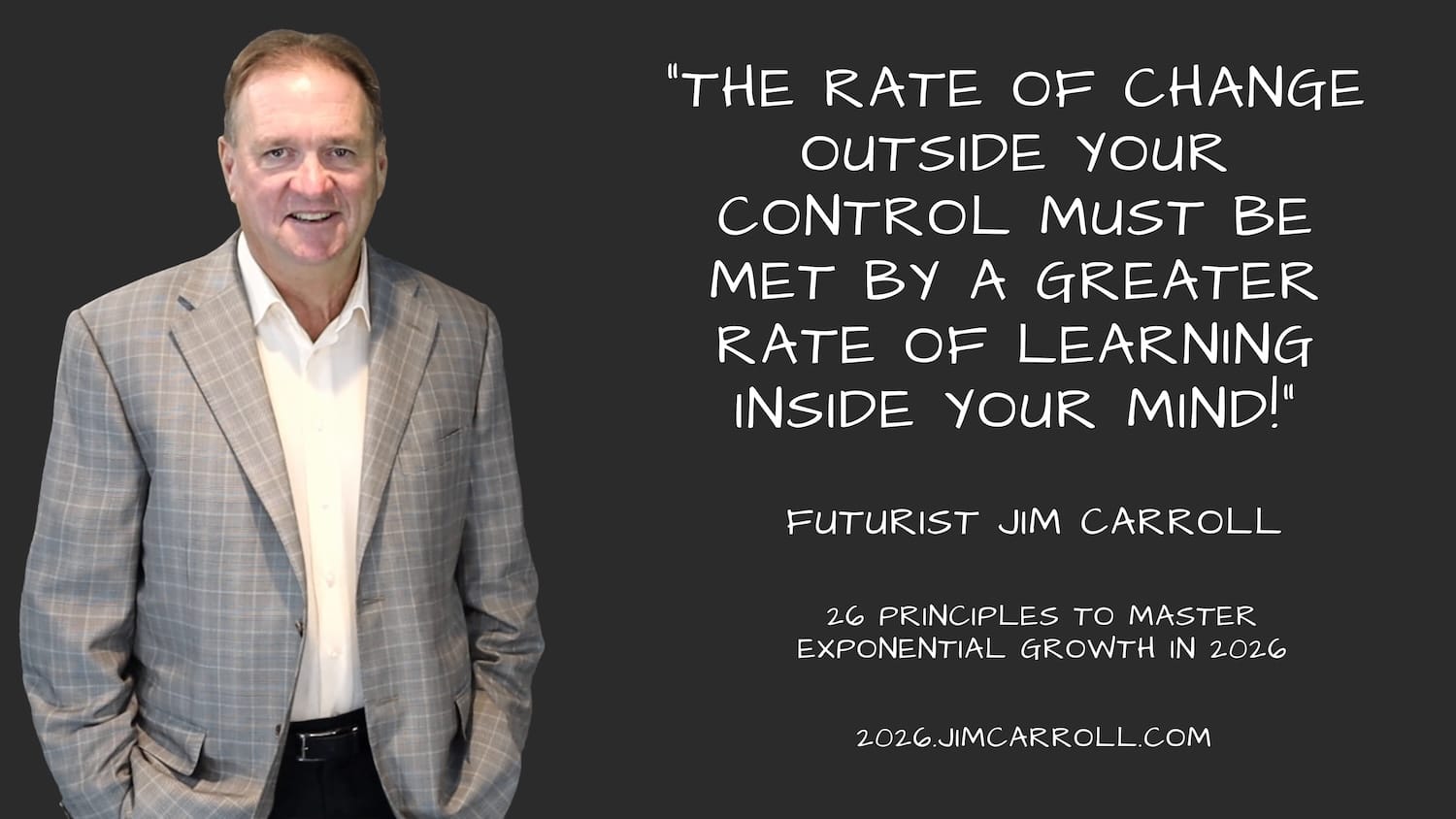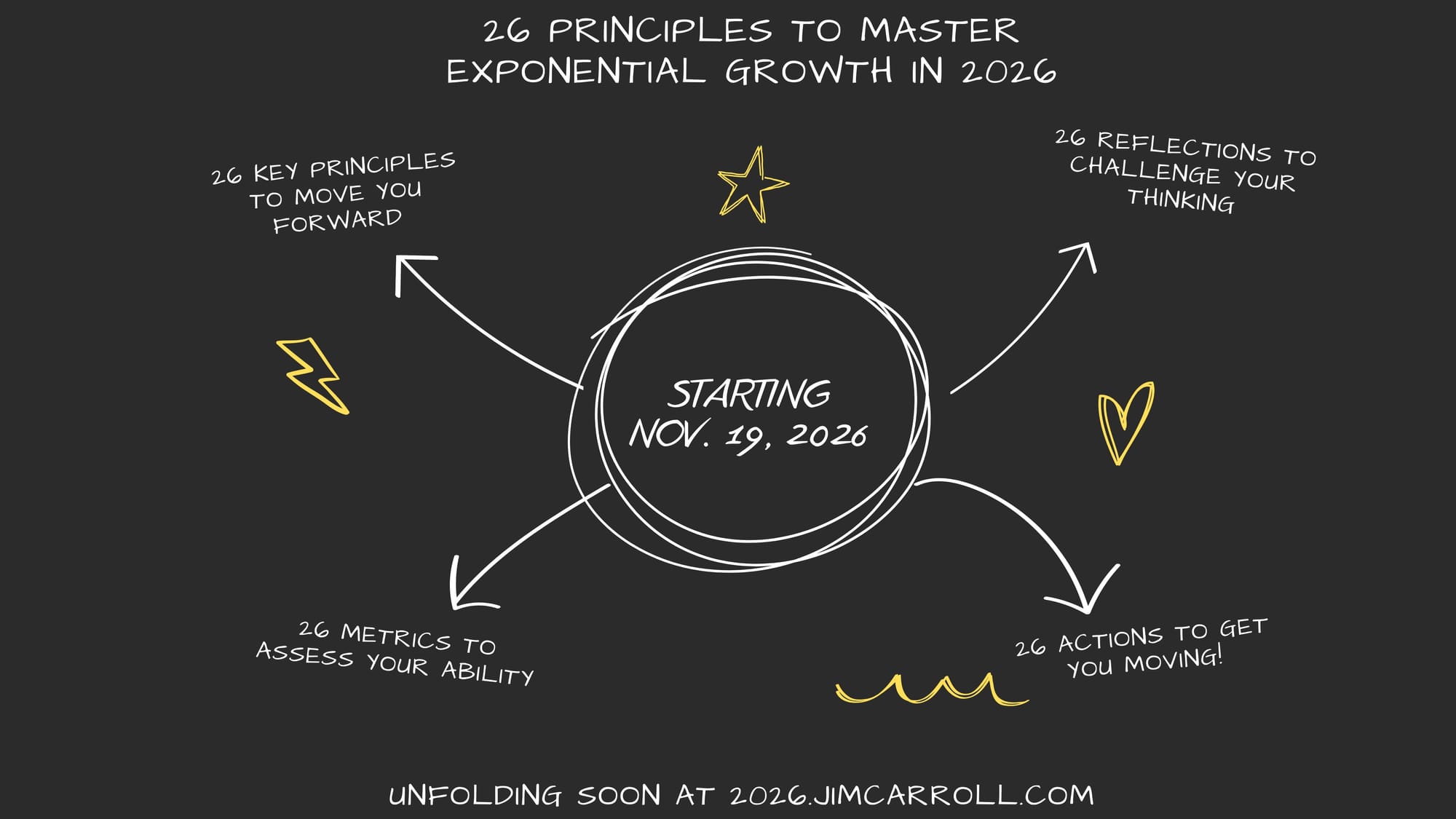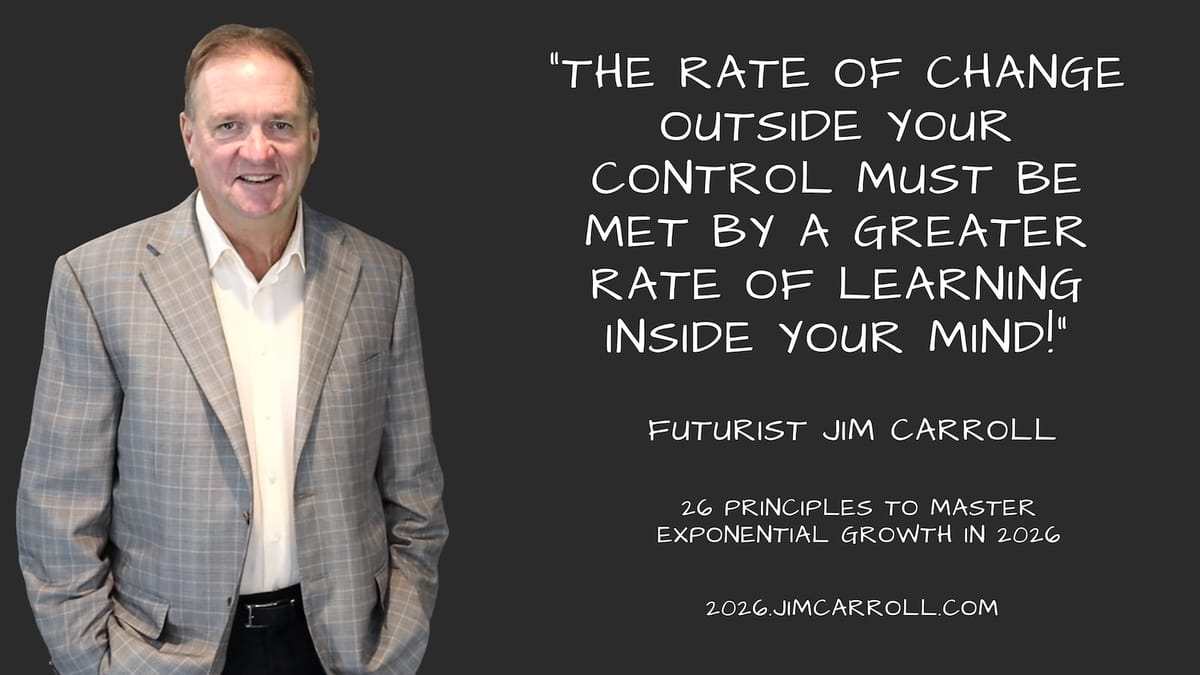"The rate of change outside your control must be met by a greater rate of learning inside your mind!" - Futurist Jim Carroll

Most people don't realize what is happening with the exponentiation of trends. And yet, it is and will continue to have a profound impact on them. That's why I'm writing this new 2026 series.
The best way to understand what is happening and why it is important is by comparing two graphs. Normal, linear trends, and exponential trends. Notice a difference?

Peter Diamandis, the founder of the XPrize Foundation, often describes exponential trends like this:
Once upon a time, long, long ago, the King of India offered to reward the inventor of chess because of the beauty of the game.
The King asked the inventor, “What would you like as a reward? Name anything in my Kingdom and it will be yours!”
The inventor responded: “Dear King, all I ask is that you place one grain of rice in the first square, two grains on the second square, four on the third square and so forth, doubling the number of grains of rice on each subsequent square.”
The King, who did not understand the power of exponential growth, was surprised by what he considered such a meagre request.”
A chessboard has 64 squares.
By the time the first row of 8 squares was counted, the King’s team had placed 128 grains of rice (a handful) on the 8th square. (This is the deceptive phase of exponential growth.)
Halfway through the board (32 squares), the number of grains of rice had become frightening at 2.1 billion grains of rice (equal to 10,000 kilograms).
By the 64th doubling, the amount of rice had become unfathomable, reaching 461 billion tons of rice, a mound the size of Mount Everest.
That is the power of exponential growth. It goes without saying that the King was not happy to find this out.
(Fair point: he has often posted about linear vs. exponential trends - this is a common idea in futurist circles).
It's best to put this into perspective in the context of the reality of trends today.
A year ago this month, I was invited by the Office of the Prime Minister of the United Arab Emirates to address the annual AGM of the region - a room full of 700 cabinet ministers and government executives. We spent a lot of time polishing my slide deck, and here are a few key slides. (Forgive the small type - these were prepared for a really big room with a really big LED screen!)
The first had to do with what I call 'the era of acceleration.'

Consider these numbers:
- Amazon Robots: from 1,000 (2012) to 75,000 ↑ Significant Increase (Volume)
- Cost of Human Genome Sequencing: from $100 million (2001) to $200 ↓ Massive Cost Reduction
- Solar Energy: $76 per watt (1977) to $0.20 ↓ Cost Reduction
- 3D Printing: $50 per cm³ (2010) to $0.50 ↓ Cost Reduction
- Battery Storage: $1,100 per kWh (2010) to <$100 ↓ Cost Reduction
Given that it was a year ago, these numbers are already wildly out of date, particularly the number of Amazon robots!
Then there is what we call 'Global Adoption Speed' - simply put, people and industries adapt to new trends faster. It took Netflix 3 1/2 years to reach 1 million users - it took ChatGPT 5 days.

AI? In another slide, I shared that the number of parameters used in developing AI models continues to increase at an exponential rate.

When you get into these numbers, it gets pretty interesting! As I like to say, 'but wait, there's more!'
- AI Inference Cost, $20.00 / Million Tokens (Nov 2022) to $0.07 / Million Tokens (Oct 2024)
- Access to Space (Low Earth Orbit): $54,500 per kg (Space Shuttle Era) to $2,720 per kg (Falcon 9)
- IoT Capacity (5G), 4G: 100,000 devices per km² to 5G: 1,000,000 devices per km²
And then there is knowledge itself; I know I've shared numbers around this before, but it's worth sharing again:
- General knowledge doubling : 100 Years (Until 1900) to 12 Hours (Projected 2020)
- Medical knowledge doubling time, 50 Years in 1950 to 73 Days in 2020
- Professional skills relevance: from 30 years historically to a half-life of 6 years today
Put all of these trends into context by thinking about the sheer acceleration of the biggest trend in our lives today - AI. Lost in the numbers above is the fact that in the span of just a few years, AI models scaled rapidly from 175 billion parameters (GPT-3) to current sophisticated models now surpassing 170 trillion parameters.(This is a 1,000-fold jump in complexity.) If you aren't saying whoah, you're doing it all wrong!
What' the impact? It's what it does to your career and the industry you work within:f
- Skills Obsolescence: If your professional development is linear (e.g., one course per year), you are falling exponentially behind the curve of required knowledge. The skills needed in 2026 are not incremental steps from 2025; they are a multi-step jump.
- Opportunity Blindness: Exponential change always starts small, looking like a "toy" or a fringe idea (e.g., the internet in 1995, early GenAI). Linear thinkers dismiss it because it's not a major factor yet. Exponential thinkers invest and experiment because they know the explosion is imminent.
- The Drag of Legacy: Linear habits—like budgeting based on last year's performance or delegating by seniority—become dead weights when the required pace is non-linear. They consume your finite time and energy.
One result of all this, even though the knowledge you know goes out of date faster than ever before, is that the systems designed for a linear world are now straining to keep pace with the exponential reality. Consider U.S. governance: the volume of federal final rules published in 2024 hit a record high of 45,028 pages, representing a 71% increase over the previous year. This is the linear system's desperate attempt to manage exponential chaos, and the resulting friction acts as a dead weight on every industry. Laws, regulations, industry structures - nothing can keep up.
The data is in, and it's unforgiving. What do you do in a world of sheer, hyper-speed velocity that is right outside your window? A world where the cost of mapping a human genome has collapsed over 475,000-fold (from $95 million to $200), and the sum of human knowledge now threatens to double every 12 hours?
This exponential compression is precisely why my opening quote is not a catchy phrase, but your absolute, professional prime directive: "The rate of change outside your control must be met by a greater rate of learning inside your mind!"
When the fundamental relevance of your professional skills is shrinking from 30 years to just six, and the linear systems around you are spewing a record-high 45,000 pages of new, complex regulation in a single year, the choice is not optional.
A linear pace of learning guarantees you fall exponentially behind.
That's why you need to wrap your head around what it is you need to do - and that's why I'll be writing my 26 Principles of Exponential Growth. I'm hoping they will be your necessary antidote to linear bias!
I'll aim to deliver this insight through a four-part daily framework:
- The Discipline you need to master.
- The Question you need to ask yourself.
- The Metric you need to measure your progress.
- The Immediate Action you need to take right now.

Starting tomorrow, I'll be taking you on the first principle of adaptation: Temporal Literacy. This is the foundational skill for every futurist, leader, and individual aiming for reinvention. It's the ability to stop judging the future by the slow pace of the past.
Get ready to reset your internal clock!
Each year, leading into the New Year, Futurist Jim Carroll writes a series designed to get you into the right headspace for what's to come. This year, his "26 Principles to Master Exponential Growth" will take you further into the world of speed. The series starts tomorrow, November 20.

